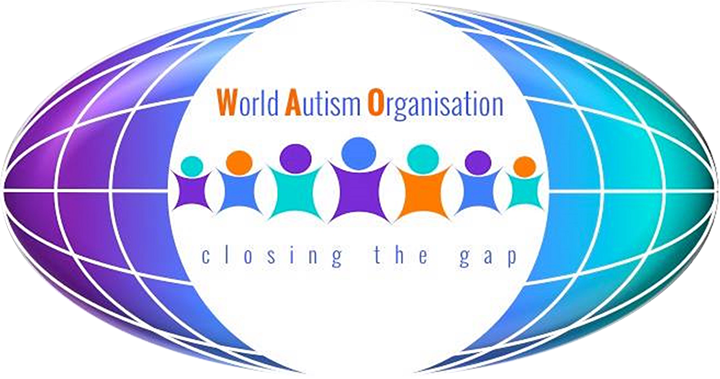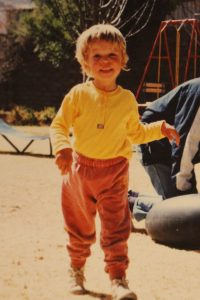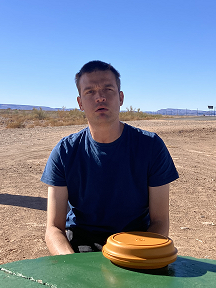What is Autism?
There are many different views.
There is a medical view.
There is a social view.
There is the lived experience.
Is it just a different way of Being?
Autistic children become autistic adults …….
…… not all of them speak, but they do communicate!
xxxxxxxxxxxxxxxxxxxxxxxxxxxxxxxxxxxxxxxxxxxxxxxxxxxxx
We will start out with the lived experience of adults with Autism who have written books, who are parents or grandparents (some with autistic children),
who have presented at conferences, who have travelled, who have trained, who are teachers, and who have learned to live with their Autism, who are the true experts and who have a myriad examples of what Autism can be or look like:
Stephen Shore: Beyond the Wall –
‘What unique challenges face the person on the autism spectrum? What is meant by the “autism spectrum” anyway? How does one relate to person with autism and Asperger Syndrome? Are they really that different from all the rest of the people in the world? What causes Autism?” In his book Stephen ‘explores’ Autism and the questions about it, searching for answers and how he can use his personal experiences and research to help make lives easier for others on the Autism Spectrum..
The Castle
Imagine that you are trying to reach a young prince locked inside a huge castle. First, you must cross the wide moat, which is filled with hungry alligators. Once across, you must find a way into the castle. Arriving inside you see armed guards everywhere.
You must find your way past the guards as you look for the secret stairway up to the highest tower in the castle. Should you find the way up, you must search for the correct key to open the lock. With key in hand, you may open the heavy door. Inside you see the child looking out the window. He does not turn to greet you. You may walk over, and being ever so careful not to speak to the child or even touch him, you may stand beside him and look out the window. After a while, you may speak, in quiet tones, about what you see when you look out the window.
If you have been careful and respectful enough and have noticed the “right” things as you looked out the window, the child may turn to acknowledge that he is no longer totally alone.
You will spend a long time in the tower, often longer than you imagined. Then a day may come when the child notices the door and leads you to it. You open the door. The child lets you hold his hand as you creep down the castle stairways, past the guards, out the door, across the moat and into the outside world. You will spend a lot of time exploring together. Maybe the day will come when the child, who has now grown older, says, “Farewell, I’m ready to explore with others and by myself.”
(A metaphor given by Pierre Johannet, MD, to the nursery teachers at the James Jackson Putnam Children’s Center, as retold by Nancy Reiser who was the author’s nursery school teacher at this center.)
xxxxxxxxxxxxxxxxxxxxxxxxxxxxxxxxxxxxxxxxx
Been There. Done That. Try This! : Edited by Dr Tony Attwood, Craig R. Evans & Anita Lesko –
An Aspies Guide to Life on Earth
Dr. Tony Attwood
“Working on this book has been enlightening, inspiring and, most of all, fun. The original idea was to explore and apply the great wisdom on Autism Spectrum Disorders that has not been published in academic journals or textbooks but has been acquired over the lifetimes of those who have Asperger’s syndrome. They are the great Aspie mentors who know ASD from the inside; they have “Been there, done that,”and from their wisdom say, “Try this!” They provide advice and encouragement that has far greater credibility, empahty and value than the advice of neurotypical parents and clinicians.”
Craig R. Evans
“In 2003 I met my first (amazing) Aspie. His name was Nolan…… Nolan is challenged. Between allergies, sensory issues and severe anxiety, daily life was a battlefield. After raising two neurotypical kids in my first marriage, I’d never experienced anything like this before. I needed to find some answers.
An in-depth scan of the web turned up little more than a few autism associations, notices of fund raising walks and sketchy discussions of possible causes and the hope for a cure. Oddly, there was nothing about living with autism. In order to learn how to deal with Nolan and the explosion of children like him, I needed to change that.
In 2008, I launched Autism Hangout, an online discussion forum that reports news, compiles facts and community-submitted personal experiences and invites ongoing discussion to discover insights on how best to deal with the daily challenges of autism. My mission was simple: I wanted to find ways for Nolan – and others like him – to “thrive with autism.”
Anita Lesko
“I went the first 50 years of my life with Asperger’s syndrome. Only I didn’t know it! I heard of it two years ago from a co-worker whose son had just got diagnosed with Asperger’s. I stood in shock as I read all the signs and symptoms of it. All the pieces of the puzzle suddenly fell into place. The whole picture of my life now made sense! I never fit in. I always knew I was different. I simply never knew why.
It seemed my invisible disorder created endles obstacles. Somehow I managed to develop strategies to overcome them. Perserverance was the biggest one.”
“This book [with input from over 300 Aspies], full of Aspie wisdom, is a dream come true. I set out to help hundreds of thousands of Aspies around the world. This is only the beginning, the first step to unite us. We have a voice that wants to be heard: here come our first words, which will resonate around the globe. We are connecting with each other and, even more far-reaching, we are allowing the world to see we have hopes, dreams and feelings too. We belong to the planet, just like everyone else.”
xxxxxxxxxxxxxxxxxxxxxxxxxxxxxxxxxxxxxxxxx
Build Your Own Life : Wendy Lawson –
A Self-Help Guide For Individuals with Asperger’s Syndrome
“Build your own life is all about the realisation that we are all different. However, individuals with Asperger’s Syndrome can be so different from the average group that our language, interests, and culture appear to be alien to many people. As one of these aliens I would suggest that we experience life in a way that enables us to focus, but in a way that many others do not fully understand. This book is written in an attempt to help my fellow aliens familiarise ourselves, as aliens, with a better understanding of ourselves and of others. If you like, it is an attempt to work out and make sense of our lives, and the lives of so many around us.
I am writing as one individual to another to share from my experiences in the hope that we can build a shared mutual identity, as well as some common understanding.”
‘Whenever a house is being constructed the foundations are laid first. After our foundations are finished we use them to start the process of building the walls of who we are. ….. We all need support in life. ….. We explore what our needs might be, what the needs of others might be, how we can negotiate having those needs met and how we can protect ourselves during the process. ….. We cannot choose the families we are born into nor can we always have the kind of control over outcomes that we would like to have. ….. We explore how our journeys might lead us in different directions. ….. We need to find the appropriate map that suits our life journey, our lifestyle. We also need to learn how to use our maps and how to keep safe during the process.”
xxxxxxxxxxxxxxxxxxxxxxxxxxxxxxxxxxxxxxxxx
Understanding and Working with the Spectrum of Autism : Wendy Lawson –
An Insider’s View
“This text is based upon my experience and understanding of autism spectrum disorder (ASD), as well as what the literature says. ….. ASD relates to a condition that impacts upon a person’s ability to understand and interact with the world around them. ….. I do not experience my being autistic as being ‘disordered’or ‘impaired’, so much as I experience it as being ‘dis-abled’ in a world that doesn’t understand autism! …..
I believe that, as a general rule, misunderstanding between individuals with ASD and individuals with a neuro-typical disposition can be the result of the differing ways we encounter and process life experiences.
….. I believe that mutual ground can be found, that bridges of communication can be built, and that the differences that separate the two worlds can become assets that will enrich the lives of those who take the journey”.
xxxxxxxxxxxxxxxxxxxxxxxxxxxxxxxxxxxxxxxxx
PLEASE HELP US IN CREATING THIS PAGE – it will be updated regularly to give an inkling as to how wide and differing the perception of Autism, or the Autism ‘spectrum’ or ‘world’ is.
It will include paragraphs from books or blogs by Autistic people. Send information which you’d like to be included to Petra: info@worldautismorganisation.com
xxxxxxxxxxxxxxxxxxxxxxxxxxxxxxxxxxxxxxxxx
A social perspective of Autism:
https://journals.sagepub.com/doi/pdf/10.1525/ctx.2009.8.2.40
Autism, through a social lens
by Stephen Poulson
The creation of the “autism spectrum” has subsumed other types of diagnoses used in past, like
the more generic description “mental retardation.”
Autism raises broader questions about fundamental
assumptions of what’s different and what’s normal,
about what’s genius and what’s deviance.
xxxxxxxxxxxxxxxxxxxxxxxxxxxxxxxxxxxxxxxxx
To find out more about the medical perspective according to the DSM V (Diagnostic and Statistical Manual of Mental Disorders – Revision 5), or the ICD-10 (International Classification of Diseases – Revision 10) you can read below.:
DSM-V: Autism Spectrum Disorder:
Diagnostic Criteria 299.00 (F84.0)
A. Persistent deficits in social communication and social interaction across multiple contexts, as manifested by the following, currently or by history (examples are illustrative,
not exhaustive; see text):
1. Deficits in social-emotional reciprocity, ranging, for example, from abnormal social
approach and failure of normal back-and-forth conversation; to reduced sharing of
interests, emotions, or affect; to failure to initiate or respond to social interactions.2. Deficits in nonverbal communicative behaviors used for social interaction, ranging,
for example, from poorly integrated verbal and nonverbal communication; to abnormalities in eye contact and body language or deficits in understanding and use of
gestures: to a total lack of facial expressions and nonverbal communication.
3. Deficits in developing, maintaining, and understanding relationships, ranging, for example, from difficulties adjusting behavior to suit various social contexts; to difficulties
in sharing imaginative play or in making friends; to absence of interest in peers.
Specify current severity:
Severity is based on social communication impairments and restricted, repetitive patterns of behavior .
B. Restricted, repetitive patterns of behavior, interests, or activities, as manifested by at
least two of the following, currently or by history (examples are illustrative, not exhaustive; see text):
1. Stereotyped or repetitive motor movements, use of objects, or speech (e.g., simple
motor stereotypies, lining up toys or flipping objects, echolalia, idiosyncratic
phrases).
2. Insistence on sameness, inflexible adherence to routines, or ritualized patterns of
verbal or nonverbal behavior (e.g., extreme distress at small changes, difficulties
with transitions, rigid thinking patterns, greeting rituals, need to take same route or
eat same food every day).
3. Highly restricted, fixated interests that are abnormal in intensity or focus (e.g.,
strong attachment to or preoccupation with unusual objects, excessively circumscribed or perseverative interests).
4. Hyper- or hyporeactivity to sensory input or unusual interest in sensory aspects of
the environment (e.g., apparent indifference to pain/temperature, adverse response to specific sounds or textures, excessive smelling or touching of objects,
visual fascination with lights or movement).
Specify current severity:
Severity is based on social communication impairments and restricted, repetitive patterns of behavior (see Table 2).
C. Symptoms must be present in the early developmental period (but may not become
fully manifest until social demands exceed limited capacities, or may be masked by
learned strategies in later life).
D. Symptoms cause clinically significant impairment in social, occupational, or other important areas of current functioning.
E. These disturbances are not better explained by intellectual disability (intellectual developmental disorder) or global developmental delay. Intellectual disability and autism
spectrum disorder frequently co-occur; to make comorbid diagnoses of autism spectrum disorder and intellectual disability, social communication should be below that expected for general developmental level.
Note: Individuals with a well-established DSM-IV diagnosis of autistic disorder, Asperger’s
disorder, or pervasive developmental disorder not otherwise specified should be given the
diagnosis of autism spectrum disorder. Individuals who have marked deficits in social
communication, but whose symptoms do not othenwise meet criteria for autism spectrum
disorder, should be evaluated for social (pragmatic) communication disorder.
Specify if;
With or without accompanying inteliectual impairment
With or without accompanying language impairment
Associated with a icnown medicai or genetic condition or environmental factor
(Coding note: Use additional code to identify the associated medical or genetic condition.)
Associated with another neurodevelopmental, mental, or behavioral disorder
(Coding note: Use additional code[s] to identify the associated neurodevelopmental,
mental, or behavioral disorder[s].)
With catatonia (refer to the criteria for catatonia associated with another mental disorder, pp. 119-120, for definition) (Coding note: Use additional code 293.89 [F06.1]
catatonia associated with autism spectrum disorder to indicate the presence of the comorbid catatonia.)
( You can access the full document here: https://cdn.website-editor.net/30f11123991548a0af708722d458e476/files/uploaded/DSM%2520V.pdf )
xxxxxxxxxxxxxxxxxxxxxxxxxxxxxxxxxxxxxxxxxxxxxxxxx
ICD-10: Childhood Autism:
Diagnostic Criteria F84.0 299.00 (299.00)
A. Abnormal or impaired development is evident before the age of 3 years in at least one of the following areas:
- receptive or expressive language as used in social communication;
- the development of selective social attachments or of reciprocal social interaction;
- functional or symbolic play.
B. A total of at least six symptoms from (1), (2) and (3) must be present, with at least two from (1) and at least one from each of (2) and (3)
- 1. Qualitative impairment in social interaction are manifest in at least two of the following areas:
- a. failure adequately to use eye-to-eye gaze, facial expression, body postures, and gestures to regulate social interaction;
- b. failure to develop (in a manner appropriate to mental age, and despite ample opportunities) peer relationships that involve a mutual sharing of interests, activities and emotions;
- c. lack of socio-emotional reciprocity as shown by an impaired or deviant response to other people’s emotions; or lack of modulation of behavior according to social context; or a weak integration of social, emotional, and communicative behaviors;
- d. lack of spontaneous seeking to share enjoyment, interests, or achievements with other people (e.g. a lack of showing, bringing, or pointing out to other people objects of interest to the individual).
2. Qualitative abnormalities in communication as manifest in at least one of the following areas:
- a. delay in or total lack of, development of spoken language that is not accompanied by an attempt to compensate through the use of gestures or mime as an alternative mode of communication (often preceded by a lack of communicative babbling);
- b. relative failure to initiate or sustain conversational interchange (at whatever level of language skill is present), in which there is reciprocal responsiveness to the communications of the other person;
- c. stereotyped and repetitive use of language or idiosyncratic use of words or phrases;
- d. lack of varied spontaneous make-believe play or (when young) social imitative play
3. Restricted, repetitive, and stereotyped patterns of behavior, interests, and activities are manifested in at least one of the following:
- a. An encompassing preoccupation with one or more stereotyped and restricted patterns of interest that are abnormal in content or focus; or one or more interests that are abnormal in their intensity and circumscribed nature though not in their content or focus;
- b. Apparently compulsive adherence to specific, nonfunctional routines or rituals;
- c. Stereotyped and repetitive motor mannerisms that involve either hand or finger flapping or twisting or complex whole body movements;
- d. Preoccupations with part-objects of non-functional elements of play materials (such as their oder, the feel of their surface, or the noise or vibration they generate).
C. The clinical picture is not attributable to the other varieties of pervasive developmental disorders; specific development disorder of receptive language (F80.2) with secondary socio-emotional problems, reactive attachment disorder (F94.1) or disinhibited attachment disorder (F94.2); mental retardation (F70-F72) with some associated emotional or behavioral disorders; schizophrenia (F20.-) of unusually early onset; and Rett’s Syndrome (F84.12).
(Accessed on 08 August 2020: https://iancommunity.org/cs/autism/icd10_criteria_for_autism )



